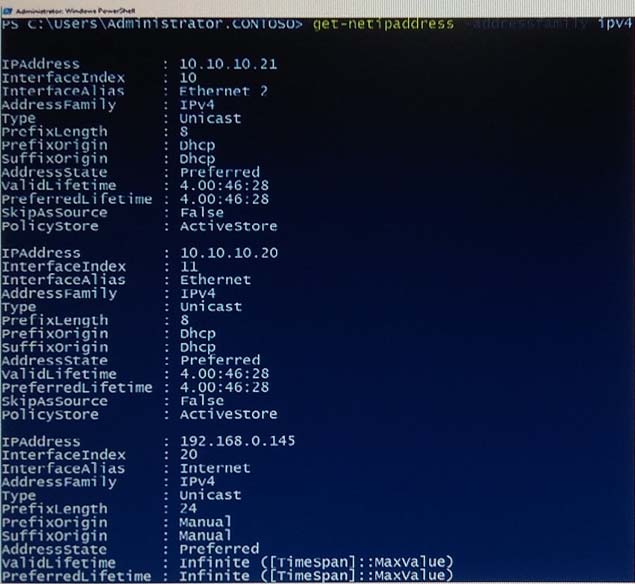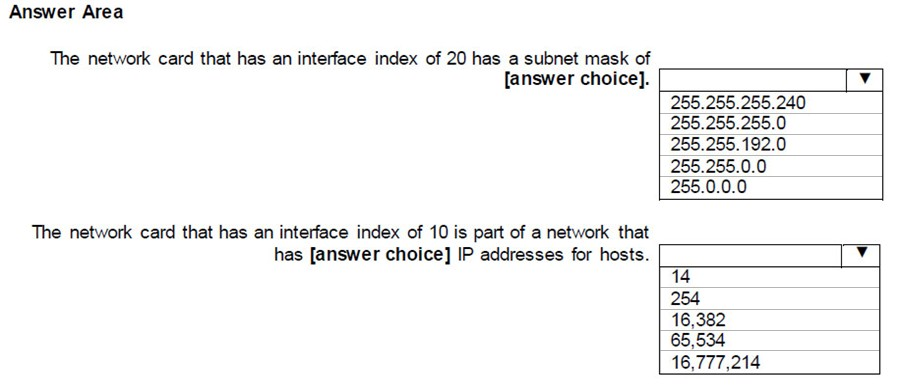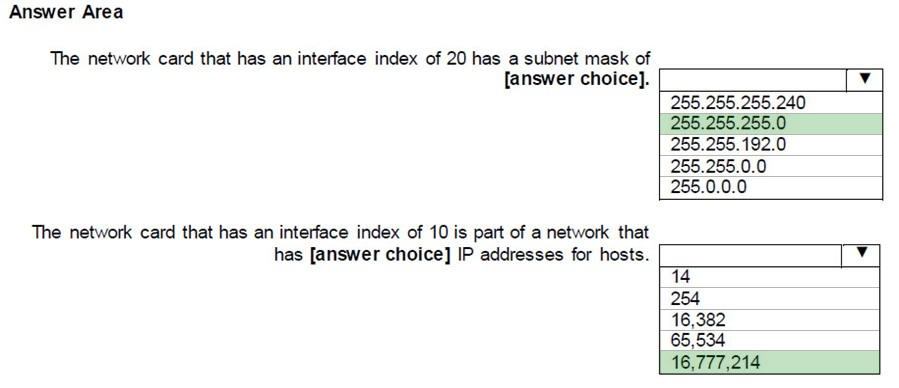

HOTSPOT -
You run Get-NetIPAddress and receive the output shown in the following exhibit:
Use the drop-down menus to select the answer choice that completes each statement based on the information presented in the graphic.
NOTE: Each correct selection is worth one point.
Hot Area:

coleman
Highly Voted 5 years, 7 months agoAmeer
5 years, 7 months agoBlue
5 years, 7 months agoThermal
4 years, 12 months agoBlue
5 years, 7 months agoArlomini
5 years, 2 months agopanda
Most Recent 4 years, 5 months agolofzee
4 years, 6 months agoVortex_SA
4 years, 6 months agoTA77
4 years, 9 months agoTA77
4 years, 9 months agoV1980
4 years, 8 months agoV1980
4 years, 8 months agoErik93
5 years, 2 months agoPox
5 years, 1 month agoNhan
5 years, 5 months agodan
5 years, 9 months agominajahan
5 years, 9 months agorsmallwo
5 years, 11 months agodan
5 years, 11 months agojhgf
4 years, 5 months ago